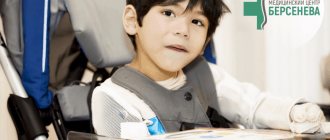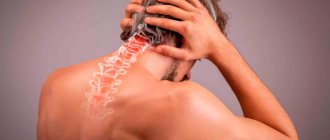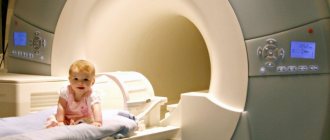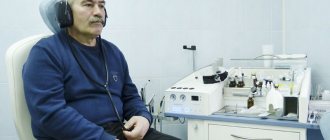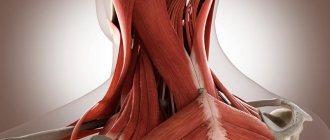Useful articles
Traumatic brain injuries are a common cause of cephalalgia and other neurological disorders. Pain often indicates the development of life-threatening complications that require emergency care (including surgery). If chronicity occurs, then symptomatic treatment of headache after injury is carried out using the same techniques and drugs as for primary cephalgia.
Types of post-traumatic headaches (PTTH)
All PTTH are divided into chronic and acute. Acute pain includes pain that develops during the first two weeks after a head injury and persists for no more than two months. The chronic type of cephalalgia also appears in the first 2 weeks, but bothers the victim for a longer period. Acute PTTH is usually symptomatic. Their severity and localization are directly dependent on the nature and severity of the damage. The appearance of pain is possible in the “light interval”, i.e. with a general improvement in the first hours or days. If acute headaches occur after a head injury, treatment should begin after identifying their specific cause. A thorough examination (including fluoroscopy, CT and MRI) is mandatory to exclude brain contusion, the presence of intracranial hematomas and hemorrhages under the arachnoid membrane.
Characteristic features of PTHA against the background of subarachnoid hemorrhage are:
- high degree of severity;
- rapid development of meningeal syndrome;
- increasing pain when straining, turning or tilting the head;
- hyperthermia;
- associated nausea and vomiting.
With brain contusions, cephalalgia is more intense on the side of the injury. It tends to intensify with percussion (tapping). Important: In some cases, acute PTTH is caused by damage to the muscles of the cervical region.
Chronic post-traumatic cephalgia acquires an independent character; often they develop as a result of a relatively mild traumatic brain injury against the background of a reversible neurological defect and the absence of significant changes in the structures of the central nervous system. Such pain can haunt the victim for many months and even years, and in the long term they sometimes progress. Painful sensations can be boring, pressing or pulsating, and there is usually no clear localization. The duration of attacks ranges from several hours to 2-3 days. In particularly severe situations, pain torments the patient every day.
Pain after injury (accident, fall)
"OSTEOMED" successfully treats post-traumatic conditions after spinal injuries and traumatic brain injuries.
Cervicocranial syndrome is a painful condition of the cervico-occipital junction resulting from trauma to the head or neck (cervical spine) with irritation of pain receptors in the ligaments, intervertebral joint capsules, muscles of the cervical spine and aponeurosis in the occipital part of the skull.
The source of pain in the neck and back of the head is injury to the supporting structures of this area (trauma or bruise of the cervical spine). In terms of the time of occurrence, injury to the cervical spine can be either acute (as a result of car accidents, falls, blows to the head or blows to the head, bruising of the neck and back of the head during a fall), or chronic (sedentary work, feeding or long-term carrying of a child in one’s arms, etc.) .d.). Acute injury to the neck (cervical spine) and cervico-occipital junction occurs when falling, colliding with another moving or stationary object, person (when skiing, snowboarding, etc.). From a similar mechanism of injury or contusion of the cervical spine, a sharp movement occurs in the cervical-occipital junction and intervertebral joints. As a result of this injury to the cervical spine, a sprain occurs in the ligaments and muscles of the neck (back, front, side group and their combinations).
Sometimes this movement in the neck can be greater than the physiological norm for the cervical spine. Then ruptures of ligaments and muscles with subluxations of the intervertebral joints and the odontoid process of the cervical vertebra are likely. Whiplash mechanism of injury to the ligaments and muscles of the neck and brain during a car accident or collision when skating, rollerblading, skiing or snowboarding, bruising of the neck and back of the head when falling. (to the picture) Depending on the intensity of pain in the back of the head and neck during injury or With a contusion of the cervical spine, the patient cannot find a comfortable sleeping position.
Chronic injury to the neck (cervical spine) and cervico-occipital junction is formed by static load from monotonous efforts over a long period of time (sedentary work). At the same time, for some time a person experiences discomfort in the neck and back of the head. Exacerbation of pain in the cervical spine can cause hypothermia, sudden movement of the head (turning the head to the side or back), and uncomfortable position of the neck during sleep.
Against the background of injury and pain in the cervical spine, irritation of the vertebral arteries occurs, which pass in the transverse sections of the cervical vertebrae.
It should be noted that in addition to neck and head pain (occiput, temples, crown), patients may also experience vestibular disorders as a result of irritation of the vertebral arteries, which are expressed by dizziness and unsteadiness when walking, nausea and vomiting, which sometimes leads to an erroneous diagnosis of a concussion brain Complaints of noise (ringing in the ears and head), numbness of the face, tongue, back of the head, and in the ear area are also possible. The headache becomes constant and debilitating.
Fatigue occurs quickly. In the morning after sleep there is no feeling that you managed to get enough sleep. Sometimes insomnia may occur against this background. General performance and attention decrease, and irritability occurs.
Diagnostics
To diagnose a neck injury (cervical spine) and cervicocranial syndrome, you should consult a doctor for a neurological examination, during which the biomechanics of the cervical spine should be assessed (range of motion, muscle tone and strength, the presence of myofascial triggers in the neck muscles, etc. .).
Based on the results of the examination, a clinical diagnosis can be made and treatment can be suggested. In the case of an unclear diagnosis, additional diagnostic instructions may be given:
- REG, USDG of vessels of the neck and brain
- X-ray of the cervical spine with functional tests
- CT scan of the cervical spine
- MRI of the cervical spine
Treatment
In case of injury to the cervical spine, therapeutic blockades can be performed in the neck muscles and intervertebral joints when conventional treatment does not have a positive effect. For this, low doses of an anesthetic (lidocaine, novocaine) and cortisone injected into the lumen of the affected joint are sufficient.
When combined with the right physical therapy regimen, these injections can provide good, long-term relief for headaches and neck pain following a cervical spine injury.
Depending on the severity of the patient’s pain in the neck, back of the head and dizziness after injury to the head or neck (cervical spine) with cervicocranial syndrome, the following therapeutic actions are possible:
- wearing a neck brace or corset (Schanz splint, Philadelphia collar)
- drug therapy (NSAIDs, analgesics, hormones)
- manual therapy
- kinesio taping
- physiotherapy
- acupuncture
- OSTEOPATHIC TREATMENT
Wearing a special neck brace or neck brace limits the range of movement in sprained ligaments and injured joints of the neck in case of cervicocranial syndrome (injury of the cervical spine). At the same time, the neck corset and neck brace create additional relief for tense and protectively spasmodic muscles as a result of a neck injury.
Against the background of restriction of movements when wearing a neck corset or neck brace, the pain symptom in the neck and back of the head with cervicocranial syndrome is eliminated much faster, which leads to a rapid restoration of the previous range of movements in sprained ligaments and injured joints of the cervical spine after a trauma to the cervical spine.
Only in our clinic, post-traumatic conditions are successfully treated by Oleg Ivanovich Muravyov, a neurologist, chiropractor, reflexologist, specialist in kinesiotaping and the manufacture of individual orthopedic insoles. Oleg Ivanovich is a specialist with extensive experience (more than 27 years), from whom you can undergo a full cycle of treatment. An individual approach and a competent combination of treatment methods allow us to achieve positive and lasting results.
How to deal with post-traumatic headaches?
Treatment of acute PTTH involves taking emergency measures to eliminate the cause that caused them (elimination of hematoma, etc.). For concussions, the following medications are prescribed:
- Cerebrolysin (peptide complex to improve metabolism in nerve cells, administered intravenously);
- Mildranate or Actovegin (antioxidants for intravenous administration);
- Cavinton (a drug for improving cerebral blood flow);
- Diacarb (dehydrant to prevent cerebral edema).
If chronic post-traumatic pain develops, treatment is carried out using the same methods as for most primary headaches. One of the most important components of therapy is the psychological rehabilitation of the patient.
They very often have concomitant mental disorders - anxiety and depression. To cope with such conditions, the help of a qualified psychotherapist is required. During the recovery period, hypnotherapy and neuroprotective therapy, as well as acupuncture, are widely used. For pain that spreads from the neck to the back of the head, the doctor may prescribe physiotherapy and therapeutic exercises, as well as exercises in the swimming pool. Drug treatment is carried out in two directions - stopping attacks and preventing them. Analgesics and β-blockers are indicated to relieve pain. In many cases, vascular agents are useful in the treatment of post-traumatic headaches. With their help, microcirculation in the brain pool improves. Thanks to this, regulatory processes in the central nervous system are restored. Memory impairment and other cognitive disorders are indications for the use of nootropics in the treatment of headaches after injury. The fight against reversible mental disorders often requires the prescription of tricyclic antidepressants. They stabilize the psycho-emotional state and normalize sleep. For the treatment of acute and chronic post-traumatic pain, patients are prescribed vitamin and mineral complexes, including folic acid, B vitamins and phosphorus. Intense cephalgia, accompanied by insomnia, is an indication for taking sedatives - Dormiplant or Adaptol. Combination therapy may include manual therapy sessions. Patients suffering from chronic PTTH need to be observed by a neurologist.
The text was checked by expert doctors: Head of the socio-psychological service of the Alkoklinik MC, psychologist Yu.P. Baranova, L.A. Serova, a psychiatrist-narcologist.
CAN'T FIND THE ANSWER?
Consult a specialist
Or call: +7 (495) 798-30-80
Call! We work around the clock!
Treatment
Depending on the injury and the nature of the pain, the doctor prescribes appropriate medication. Medicines must be prescribed by a specialist; you cannot self-medicate.
In addition, patients may be prescribed therapeutic massage, acupuncture, and physical therapy sessions. Many patients note that these measures bring relief. Psychotherapeutic treatment methods are also used.
Clinical Brain Institute Rating: 5/5 — 1 votes
Share article on social networks
